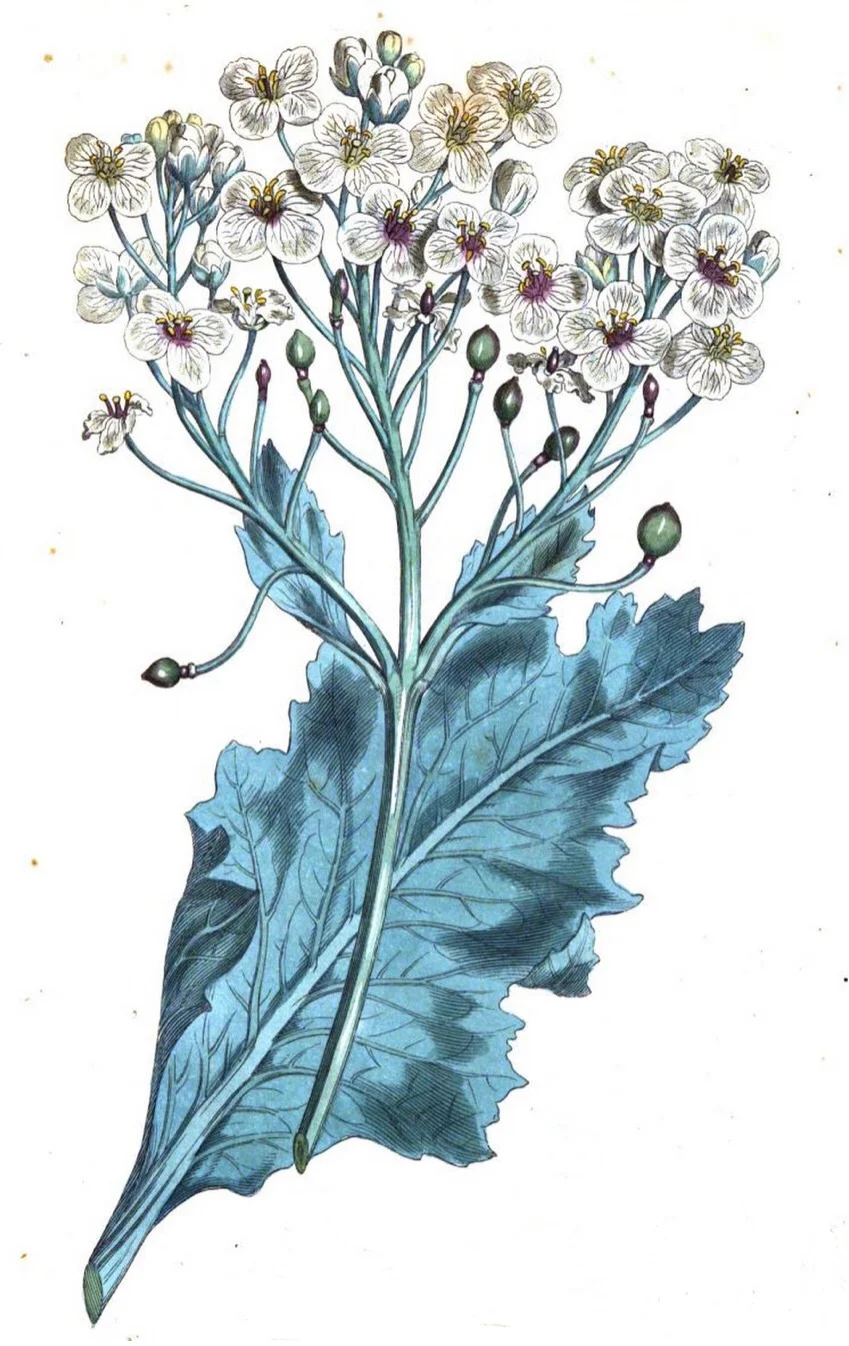Sea Kale
Sea Kale
SEA KALE SEEDS
Crambe maritima
An interesting addition to the modern garden, this ancient perennial Brassica features an undulating mass of big blue leaves that are covered with pretty white honey-scented flowers in Summer. It is endemic to the sea coasts of Western Europe and was likely foraged for thousands of years before being cultivated in English gardens.
Curiously, the leaves are, for the most part, quite unpalatable. It is only the new growth in spring that is consumed, and only after having been blanched (grown in darkness, by means of a terra cotta cloche or overturned bucket). Several cuttings of blanched stems can be had each spring from established plants.
Sea Kale is a very large plant, and requires very rich but well-drained garden soil to establish itself. Once established it will be nearly impossible to remove, and will potentially provide multiple generations with the burden of having to remember to cover it in the middle of winter.
Per William Curtis, an application of composted manure each December will protect plants from frost and “add to their luxuriance." Blanched shoots should be cut at 4" in the second and subsequent years, and prepared like asparagus.
Germinating the seeds of this species can be a real hassle. Just before sowing you must remove the hull from around the seed with pliers: gently squeeze until the hull cracks; pry hull apart gently, taking care to not damage the seed; place seeds into moist soil, fully covered but no more than 1/4" deep, pressing to keep seeds snug; wrap the entire pot with plastic to maintain moisture and refrigerate for 6-8 weeks; uncover the pot, misting generously to replenish any lost moisture, and cover the top of the pot (but not the bottom) with plastic again to maintain moisture; kept moist at 60°F, seed should begin to germinate within two or three weeks.
Germination of these seeds is frequently slow and erratic and you could hold the pot for several months if you have the patience, but avoid heat as it will further retard germination. As an alternative to germinating indoors, pots may be placed in a sheltered area outdoors in midwinter. An unheated screen porch or shed is perfect. Just be sure that the soil stays moist and receives some sun, even indirectly. Check pot frequently for germination.
Whether you choose to utilize this species for food is up to you, but it is highly recommended as an ornamental and as a conversation piece.
Hardy to zone 5.
Packet contains at least 10 seeds.
